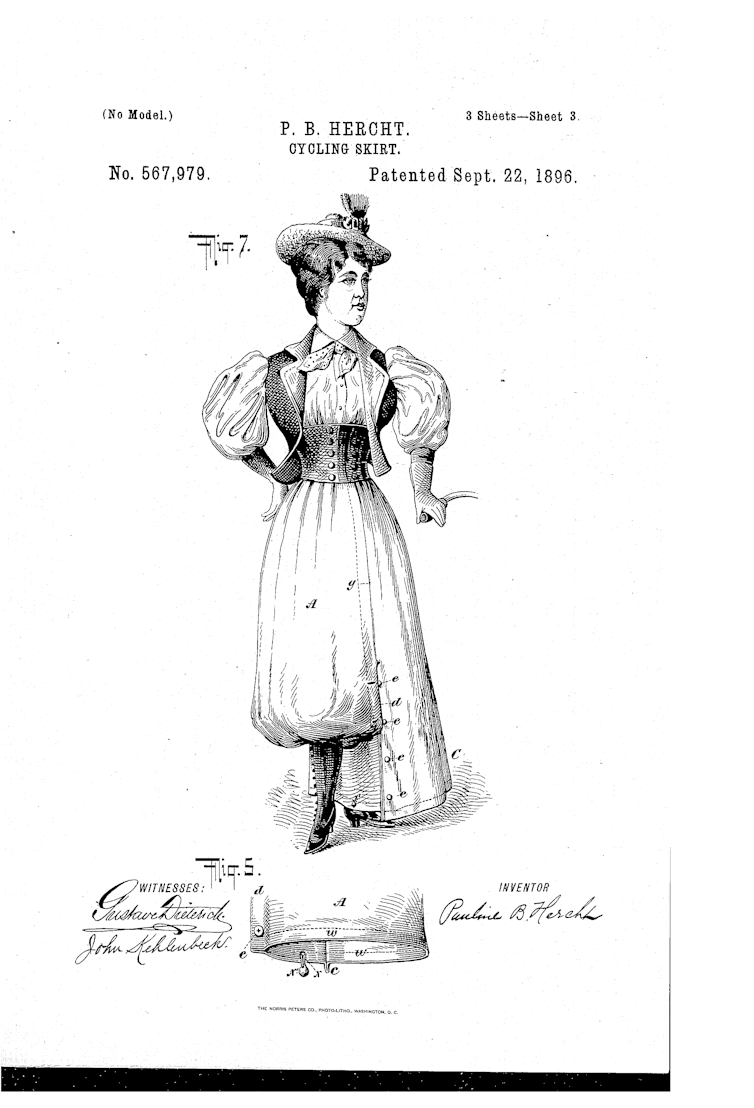Skorts revolutionised how women and girls play sport. But in 2025, are they regressive?
- Written by Jennifer E. Cheng, Researcher and Lecturer in Sociology, Western Sydney University

If you watched any of the 2025 Wimbledon womens’ matches, you’ll have noticed many players donning a skort: a garment in which shorts are concealed under a skirt, or a front panel resembling a skirt.
You may even remember skorts from your schooling days, as they’re commonly offered in girls’ uniforms throughout Australia.
The skort (a portmanteau of skirt and shorts) has played a truly unique role in the history of women’s clothing. They were once a progressive item of clothing, as they afforded women the opportunity to partake in activities that would have been difficult in a skirt or dress.
Their role in contemporary society, however, is a bit more complicated.
Rebellious beginnings
The first garments resembling skorts were developed in the 1890s so women could ride bicycles without their skirt getting caught in the chains. While the puffy “bloomers” had already been invented a few decades earlier, women who wore them often faced ridicule.
Skorts were considered revolutionary at a time when men both figuratively and literally wore the pants.
Back then, they were usually a pair of loose pants under a front panel resembling a skirt. The aim was to retain the wearer’s femininity, and not offend those who thought pants were a purely masculine article of clothing.
The skort as we know it today, and as is seen across the sporting world, was popularised in the 1960s by American fashion designer Leon Levin.
This skirt was said to offer “the freedom of shorts and soft lines of a skirt”. The underlying message: even as women participate in traditionally “masculine” activities, they should be careful not to look too masculine.
Sport management academic M. Katie Flanagan argues women may be convinced that exercising in a skort achieves an acceptable gender performance. In other words, they are socialised to think they have to “perform” their gender by wearing the “correct” clothing.
Skorts in sport and school
In the sporting world, skorts are deliberately designed to be trendy and attractive, rather than purely functional.
One study on women golfers found they were more satisfied with their uniforms if they were happy with both the comfort and attractiveness, indicating women’s sportswear isn’t just about fit and practicality.
Skorts have historically also had class associations. As recently as ten years ago, sport skorts were an expensive item reserved for those from the middle and upper classes. Women from lower economic classes also tended to not have the time and/or resources to engage in the activities skorts were designed for, namely tennis and golf.
More recently, however, discount stores have made skorts accessible to those on a budget.
School skorts, a topic of my ongoing research, are particularly affordable at discount stores. A generic discount store skort may cost about A$10, compared to A$20–40 for one purchased directly from a school.
Some schools offer skorts to girls as the equivalent of sports shorts or as part of the everyday uniform. Other schools seem to prefer culottes as an alternative to a dress or skirt – shorts that are loose enough to resemble a skirt.
Many schools still don’t offer shorts to girls as part of the everyday uniform. Whether or not girls are allowed to wear the “boys’” shorts comes down to the individual school.
From rebellion to restriction
One 2019 review of school uniform policies in South Australia found 98.6% of public schools included shorts as a uniform option for girls, compared to just 26.4% of private schools.
Researchers Sarah Cohen-Woods and Rachel Laattoe found girls in private schools were often restricted in their choices, having to choose between skorts and culottes as an alternative to a skirt or dress.
Across Australia, all state and territory education policies – most of which came into effect between 2017 and 2019 – mandate public schools must offer girls the option of wearing shorts and pants.
However, the wordings of these policies differ widely. While New South Wales, Victoria and Norther Territory specifically mention shorts and pants must be offered to girls, Queensland, Western Australia and Tasmania specify schools must offer unisex or gender neutral items to all students.
South Australia’s and Australian Capital Territory’s policies further state uniform items should be categorised by type of clothing, or in non-gender specific terms.
However, in some states, including New South Wales, schools are free to interpret the policy as they wish, which is why some only offer culottes or skorts to girls. There is generally no oversight or enforcement of policies to force schools to offer actual shorts to girls.
A similar debate is happening in women’s sports. Ireland’s Camogie Association only ended the compulsory skorts policy in May, after years of complaints by players. Dublin captain Aisling Maher said she was “sick of being forced to wear a skort that is uncomfortable and unfit for purpose”.
“In no other facet of my life does someone dictate that I have to wear something resembling a skirt because I am a girl. Why is it happening in my sport?” Maher said.
A garment for the male gaze
In recent years, many stores have advertised skorts for fashion. Target, for instance, currently sells a tailored skort described as a “must have for any trendsetter looking to stand out in a crowd”.
There are conflicting arguments about whether skorts are progressive or regressive. On one hand, they allow women and girls to move freely during physical activities, without having to worry about their underwear being visible.
On the other, they set a precedent in regards to how women and girls ought to perform their gender, by avoiding looking too “masculine” – which makes them somewhat misogynistic.
The skort is an object of dual meanings: at once a skirt and a pair of shorts – at once progressive and regressive.
Authors: Jennifer E. Cheng, Researcher and Lecturer in Sociology, Western Sydney University





